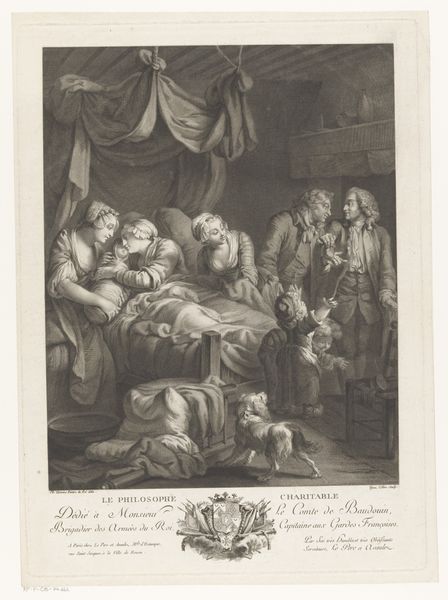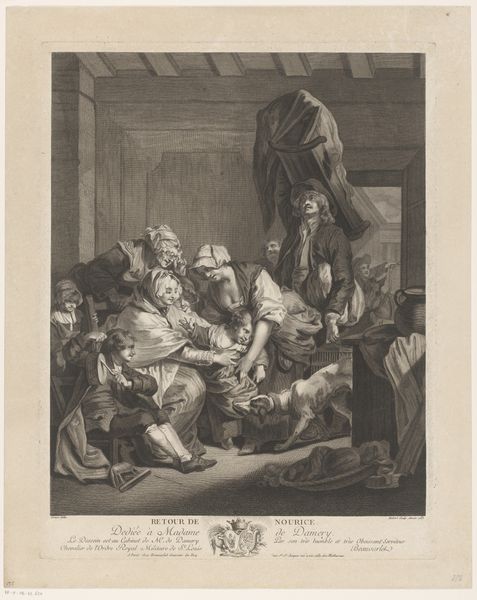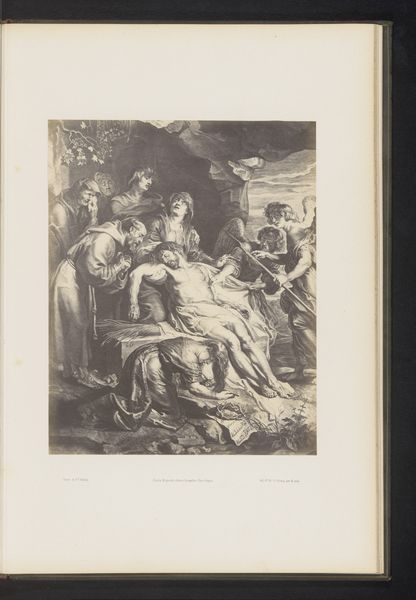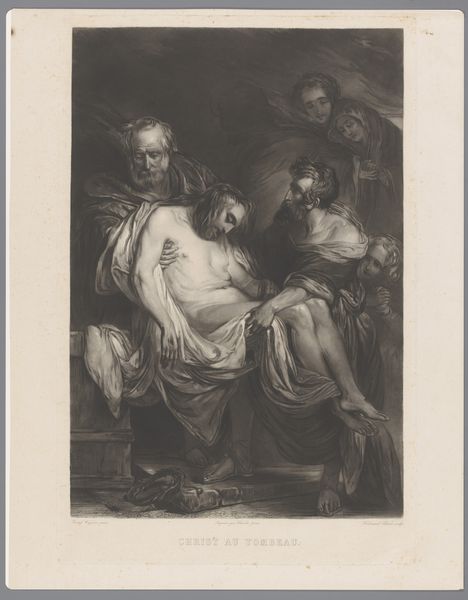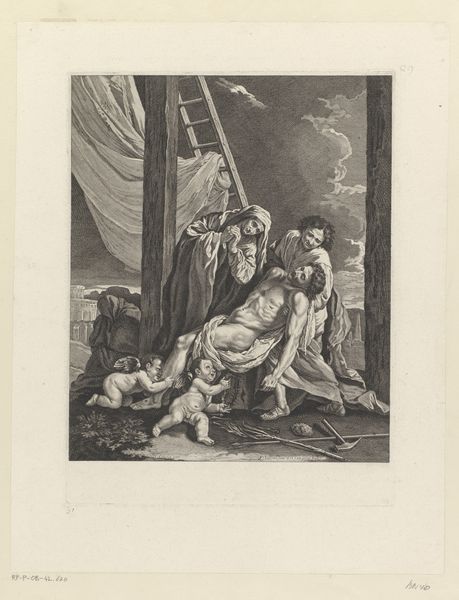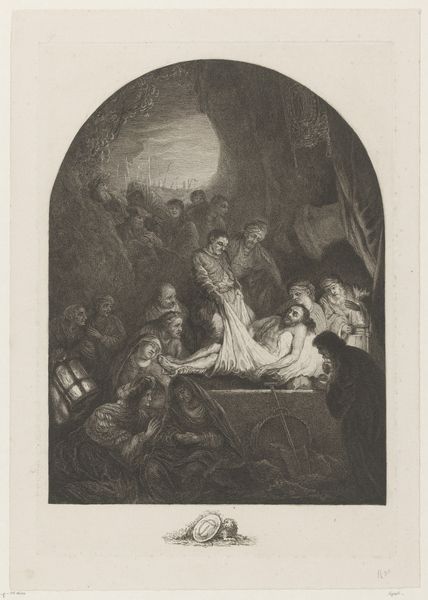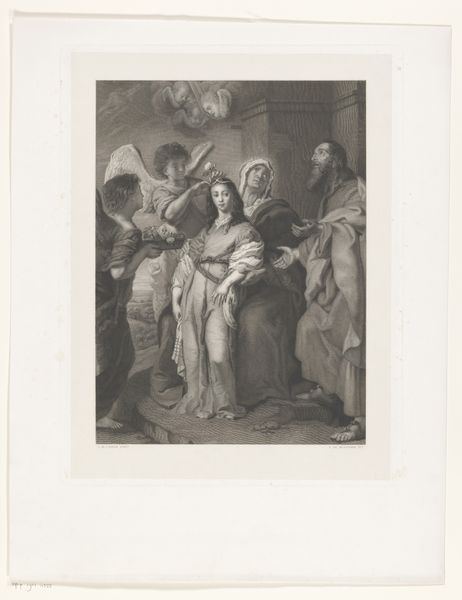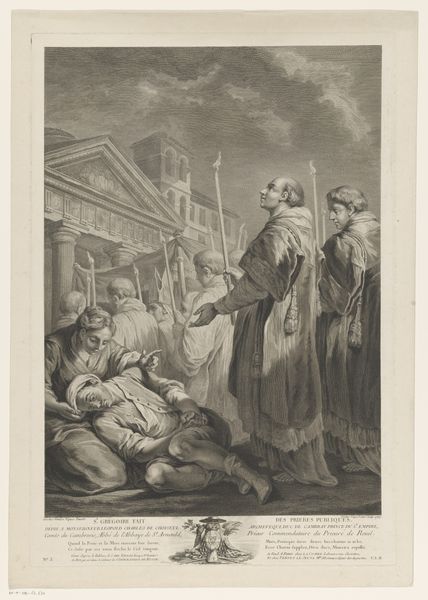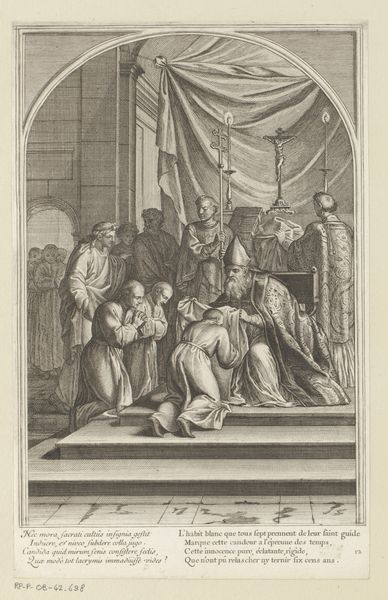
print, engraving
#
portrait
#
baroque
# print
#
old engraving style
#
group-portraits
#
19th century
#
history-painting
#
engraving
Dimensions: height 476 mm, width 300 mm
Copyright: Rijks Museum: Open Domain
Curator: There's such a stark and moving scene unfolding in "Sterfbed van Maria," or "Death of the Virgin," an engraving made around 1729-1730 by Simon de la Vallée, currently residing at the Rijksmuseum. Editor: My immediate reaction is the weight of grief, etched in every line. The drooping heads, the concealed faces. It's almost theatrical, this outpouring of sorrow. Curator: It is intensely theatrical. Notice the deliberate arrangement of figures; they seem caught between public mourning and private anguish. This derives, in part, from its origins as a copy of a painting by Caravaggio. De la Vallée translated that theatrical drama to printmaking, a fantastic feat. Editor: Indeed. Engraving, with its inherent precision, adds another layer to the composition. Each line, carefully placed, seems to emphasize the emotional texture. What's interesting to me is how death is framed here: the visual absence of struggle allows reflection, and for that grief to blossom. Curator: And the details reinforce that solemn mood: the basin of water for cleansing rituals, the somber drapery hanging above… each detail signifies loss, but also echoes the visual language associated with Baroque drama and spectacle. Editor: It reminds me how loss is a communal experience. Everyone surrounding Mary isn't merely observing; they're participants in her story, feeling the ripple effects of this profound moment. See how light and shadow become characters in themselves. It adds a psychological complexity. Curator: Exactly. In these history-painting type works, Baroque artists sought to affect and move the viewers. The cross-cultural appeal speaks to the universality of death and grief, made especially poignant through this intimate, albeit public, depiction. Editor: And the permanence of the print amplifies that effect—it memorializes the moment, making it available to viewers centuries later. A still moment of shared human vulnerability, captured for us. It speaks to the lasting resonance of grief, doesn’t it? Curator: I completely agree, what strikes me most is the way the image merges Baroque sensibility with human empathy, reminding us that art transcends time by mirroring fundamental aspects of existence.
Comments
No comments
Be the first to comment and join the conversation on the ultimate creative platform.
